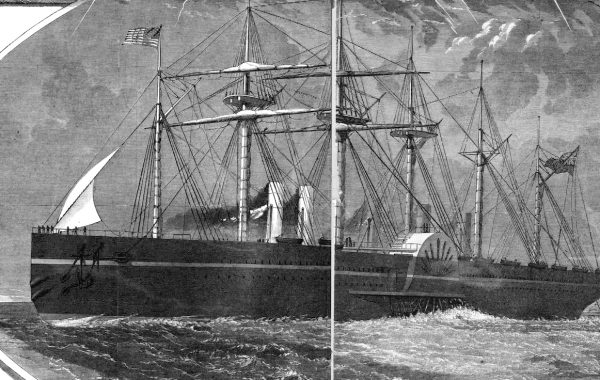The Mohawk River is a tributary of the Hudson River, joining the bigger river at the north end of Troy, New York. Unlike the Hudson, which is a sea-level estuary all the way from New York Bay to the Federal Dam located halfway between downtown Troy and the Mohawk, the Mohawk naturally has a reasonably large change in elevation along its path, resulting in rapids and small waterfalls. One of the original plans for the Erie Canal included channelizing the Mohawk, but that task was too difficult for early nineteenth-century engineering, so a separate canal was dug parallel to the river. When the canal was greatly expanded after 1900, a portion of the Mohawk was channelized using a series of weirs.
To a civil or mechanical engineer, particularly in the nineteenth century, a river with a large change in elevation sounds like free power. It is not a coincidence that some of the earliest industrial areas in the US were located on such rivers, including the Poesten Kill in Troy, the Passaic River in Paterson, New Jersey, and the Merrimack River in Lowell, Masachusetts. The building above is the “new” gatehouse for the power canal at the Harmony Mill complex in Cohoes, New York, just up the Mohawk from Troy and the Hudson. In short, water was diverted from the river above the Cohoes Falls into the power canal, run through turbines to create usable power (which was distributed through the mills using shafts and belts), and then dumped back into the river below the falls. A dam had been built above the falls in 1831 to ensure a steady supply of water.
This gatehouse opened in 1866 along with Harmony Mill number 3, the largest of the complex at almost 1200 feet long, during a substantial expansion of the cotton-processing capacity there. Harmony Mill 3 was nicknamed the Mastodon during construction not, surprisingly, for its size but rather because a mastodon skeleton was found on site during excavation for the foundations. The remaining buildings (Mills 1, 3, and 4) are now on the National Register of Historic Places, not for their beauty but because of their place in the history of US industry. The power canal itself is still in use for generating electricity.
It’s worth noting that the past and current use of the power canal has been providing pollution-free power (first mechanical, then electrical) for roughly 190 years. It’s also worth noting that New York’s Capital District, including Albany, Troy, Schenectady, Cohoes, Watervliet, and numerous other small cities and towns, has an incredible wealth of industrial and engineering history, which I first learned about from Tom Carroll when he taught at Rensselaer Polytechnic Institute. Tom went on to be the Executive Director of the Hudson Mohawk Industrial Gateway for many years.



